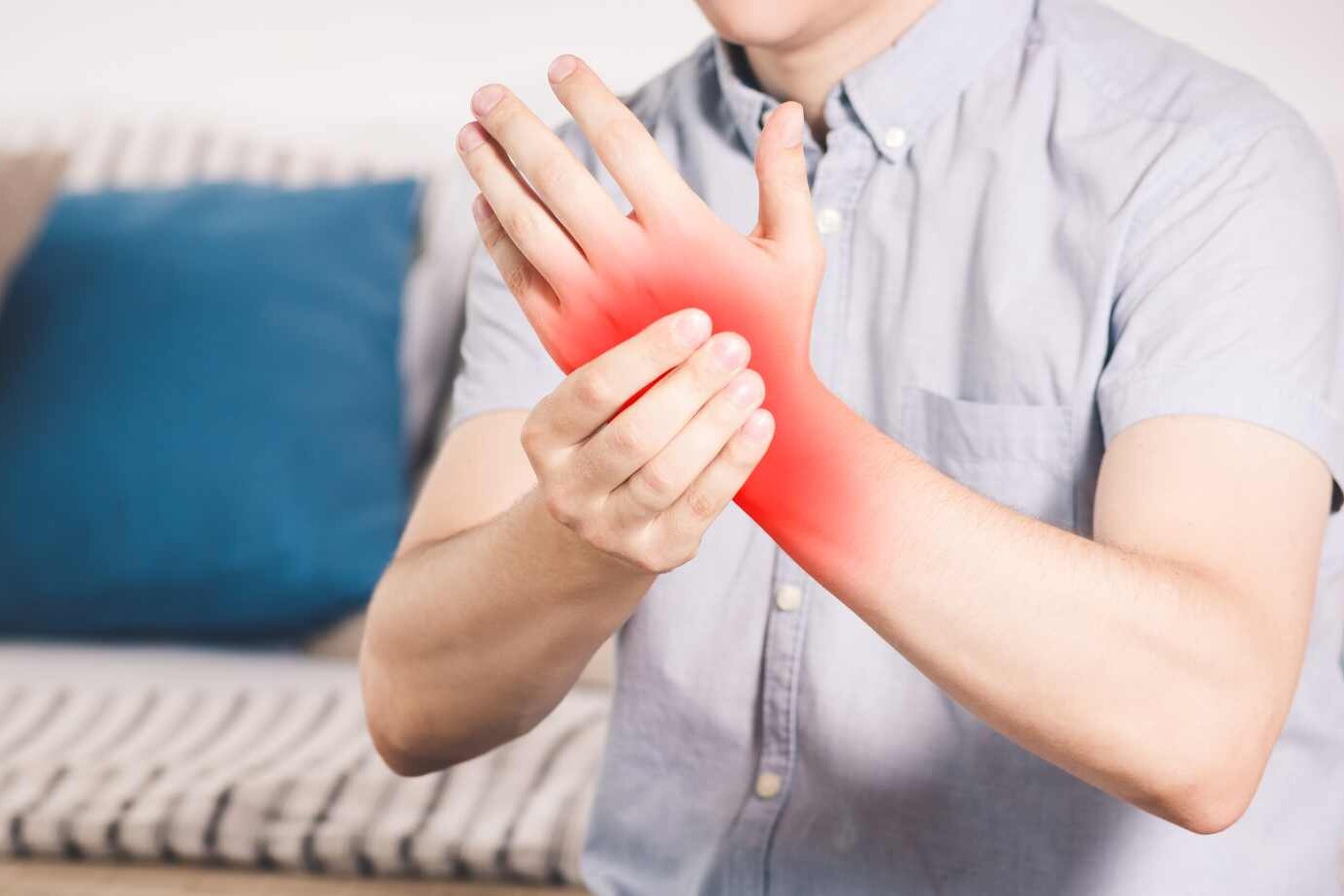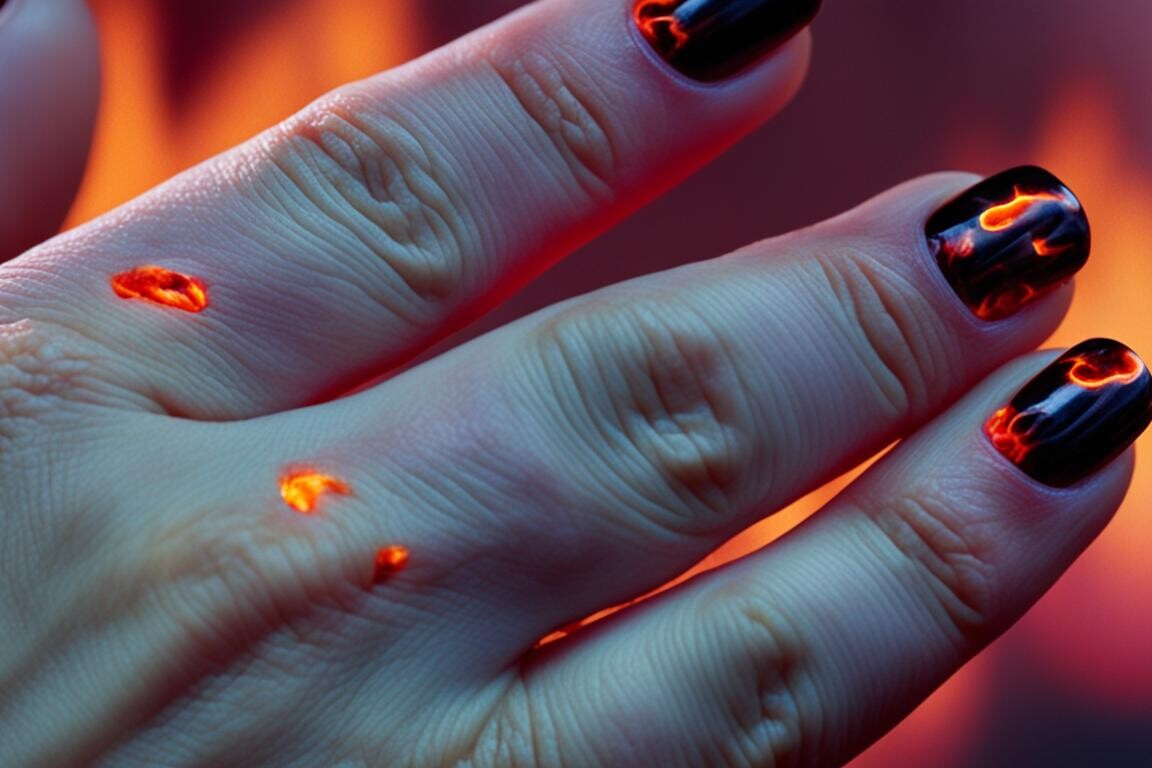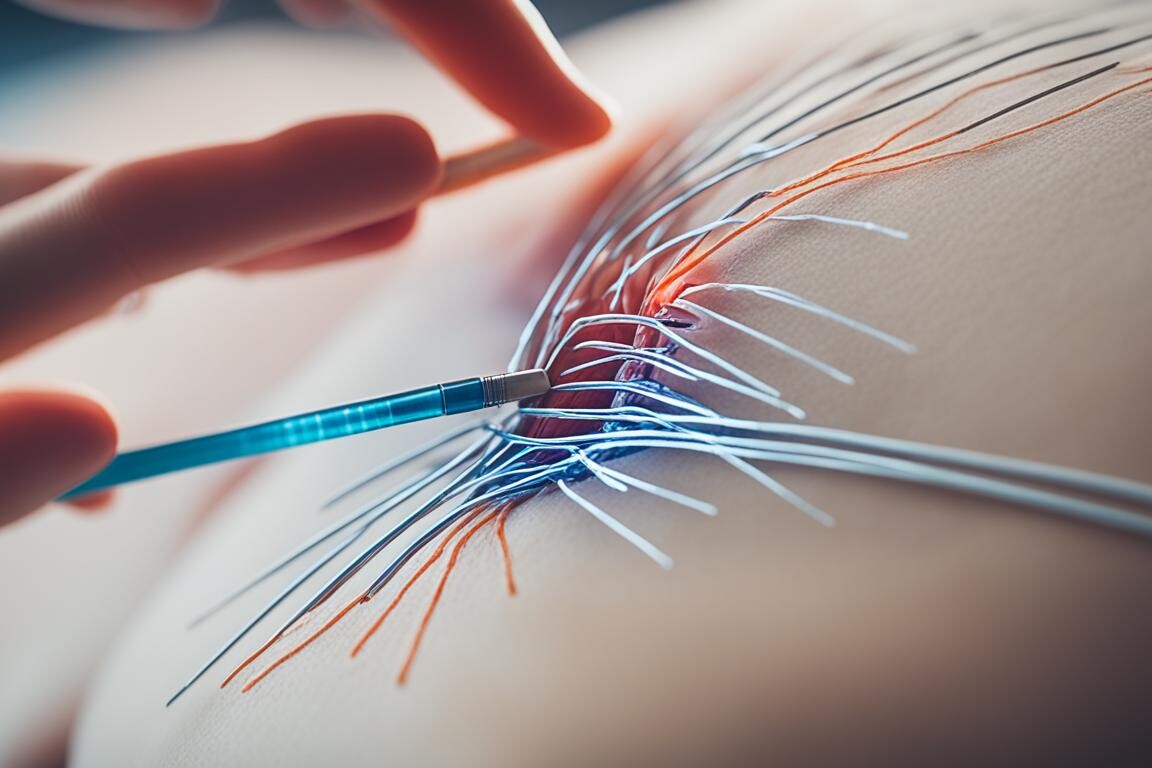Hello! I’m glad you’ve found your way to this article on CRPS treatment and physical therapy’s role in managing chronic pain and improving mobility. If you or someone you know is living with Complex Regional Pain Syndrome (CRPS), you understand the challenges and limitations it can bring to daily life.
Regarding CRPS treatment, personalized care and expert guidance are critical. Physical therapy offers a holistic approach to managing the symptoms of CRPS, providing individualized solutions to enhance function and alleviate chronic pain. With the help of a skilled physical therapist, you can regain control and improve your quality of life.
In this article, we will explore what CRPS is, how it is diagnosed, and physical therapy’s crucial role in its treatment. We will highlight the benefits of physical therapy for CRPS and present successful case studies demonstrating this approach’s effectiveness. We will also discuss the importance of compliance and commitment to physical therapy and provide insights into the future of CRPS treatment.
Throughout this journey, I’ll share valuable insights and information to help you navigate the complexities of CRPS treatment. So, let’s dive in and discover how physical therapy can make a real difference in managing CRPS and improving your overall well-being.
Table of Contents
ToggleWhat is Complex Regional Pain Syndrome?
Complex Regional Pain Syndrome (CRPS), also known as reflex sympathetic dystrophy, is a multisystem disorder characterized by severe and long-lasting pain. This condition often arises from an injury to an arm or leg, such as a fracture or surgery, and it affects multiple systems in the body. CRPS is a complex condition that requires a comprehensive approach to treatment.
The symptoms of CRPS include:
- Severe pain
- Sensitivity to touch
- Changes in bones and skin
- Excessive sweating
- Tissue swelling
To better understand CRPS, let’s examine its symptoms and how it impacts the body.
Symptoms of CRPS
CRPS is known for its debilitating symptoms, which can vary from person to person. The most common symptoms include:
- Severe and persistent pain, often described as burning, throbbing, or shooting
- Increased sensitivity to touch, temperature, and vibration
- Changes in skin colour and temperature, ranging from white and cold to red and warm
- Swelling and stiffness in the affected area
- Abnormal hair and nail growth
- Tremors and muscle spasms
It’s important to note that CRPS is not limited to physical symptoms. The condition can also impact a person’s mental and emotional well-being, leading to feelings of anxiety, depression, and frustration.
Now that we better understand CRPS and its symptoms let’s explore how this condition is diagnosed.
How is Complex Regional Pain Syndrome Diagnosed?
Diagnosing Complex Regional Pain Syndrome (CRPS) requires a detailed medical evaluation to rule out other conditions that may present similar symptoms. A doctor familiar with the syndrome will assess the individual’s reported symptoms, conduct a thorough physical examination, and review their medical history. If CRPS is suspected, a referral to a physical therapist may be included in the overall treatment plan.
Critical Steps in CRPS Diagnosis:
- Medical Evaluation: A comprehensive assessment is conducted by a healthcare professional experienced in diagnosing CRPS. This evaluation involves detailed discussions with the individual about their symptoms, medical history, and any relevant injuries or events.
- Ruling Out Other Conditions: To establish a complex regional pain syndrome diagnosis, the doctor will carefully consider and eliminate other conditions with similar symptoms. These may include nerve entrapment, peripheral neuropathy, or other chronic pain disorders.
- Physical Examination: A thorough physical examination assesses the individual’s sensory responses, motor function, circulation, and other related factors. This examination helps identify potential signs and indicators of CRPS.
- Diagnostic Criteria: Diagnosis of CRPS is based on established diagnostic criteria, including the presence of continuous, disproportionate pain and the existence of other clinical manifestations associated with CRPS, such as changes in skin temperature, skin colour, and swelling.
Medical professionals can accurately identify CRPS and formulate an effective treatment plan by following a rigorous diagnostic process and ruling out other conditions. As part of this plan, referral to a physical therapist is often recommended to help manage symptoms and support the individual’s recovery.
The Role of Physical Therapy in CRPS Treatment
Physical therapists are movement experts in treating Complex Regional Pain Syndrome (CRPS). They develop personalized treatment plans to address the specific needs and goals of individuals with CRPS, focusing on symptom management, improving function, and enhancing the quality of life for those with the condition.
Physical therapy for CRPS involves a range of techniques and interventions designed to reduce pain and promote mobility. These may include:
- Manual therapy: Hands-on techniques such as massage, joint mobilization, and gentle stretching to relieve tension, improve flexibility, and reduce pain.
- Exercise: Tailored exercises to strengthen muscles, improve range of motion, and enhance overall physical function.
- Educational guidance: Providing information and strategies to individuals with CRPS on self-care techniques, pain management, and lifestyle modifications that can support their recovery.
The goal of physical therapy is to empower individuals with CRPS to regain control over their symptoms and improve their quality of life. By addressing the unique challenges posed by CRPS, physical therapists help individuals develop self-management skills and provide ongoing support throughout the treatment process.
Through personalized treatment plans and close collaboration with healthcare professionals, physical therapists create an environment that promotes holistic healing and optimal outcomes for individuals with CRPS. By combining their movement and pain management expertise, physical therapists make a significant difference in those living with CRPS.
| Benefits of Physical Therapy for CRPS |
|---|
| Pain management |
| Improved mobility |
| Symptom relief |
| Enhanced quality of life |
| Individualized care |
Benefits of Physical Therapy for CRPS
Physical therapy offers numerous benefits for individuals with Complex Regional Pain Syndrome (CRPS). Through targeted interventions and personalized care, physical therapy plays a crucial role in managing chronic pain, improving mobility, and enhancing overall function and quality of life.
Pain Management
One of the primary benefits of physical therapy for CRPS is effective pain management. Physical therapists employ various techniques and modalities to address underlying factors contributing to pain, such as muscle imbalances, joint dysfunctions, and impaired movement patterns.
Improved Mobility
Physical therapy aims to restore and improve mobility in individuals with CRPS. Therapists use exercises, joint mobilizations, and stretching techniques to increase range of motion, improve muscle strength, and enhance functional abilities. Improved mobility contributes to greater independence and a higher quality of life.
Decreased Hypersensitivity
CRPS often causes hypersensitivity to touch, resulting in pain and discomfort. Physical therapy interventions, such as desensitization techniques, sensory re-education, and gentle touch exercises, help decrease hypersensitivity and promote tolerance to tactile stimuli.
Increased Function
Physical therapists work collaboratively with individuals with CRPS to develop personalized treatment plans focused on improving function. By targeting specific impairments through therapeutic exercises, balance training, and functional activities, physical therapy helps individuals regain the ability to perform daily tasks and engage in meaningful activities.
Education and Guidance
Physical therapists provide education and guidance on self-care techniques and strategies for pain management. They empower individuals with CRPS to take an active role in their recovery, teaching them ways to manage symptoms and prevent exacerbations. Education includes posture, ergonomics, activity modification, and energy conservation advice.
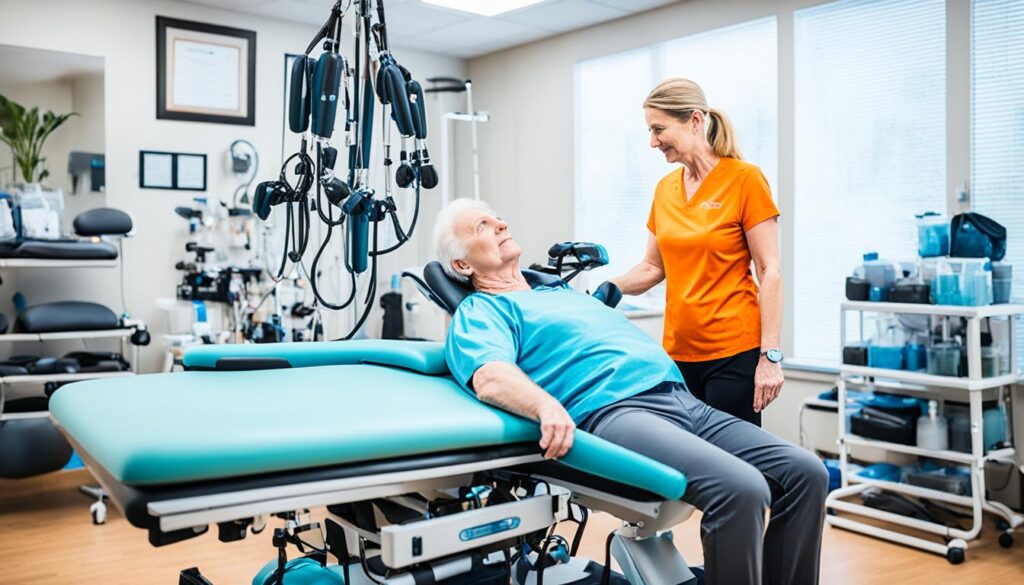
| Benefits of Physical Therapy for CRPS |
|---|
| Pain Management |
| Improved Mobility |
| Decreased Hypersensitivity |
| Increased Function |
| Education and Guidance |
Prevention of CRPS
While CRPS cannot always be prevented, early intervention and appropriate treatment can help reduce the risk of developing the condition. It is essential to properly manage injuries, fractures, and surgeries to minimize the chances of CRPS. Avoiding prolonged immobilization and receiving appropriate physical therapy after an injury can significantly reduce the likelihood of developing CRPS.
Finding the Right Physical Therapist for CRPS Treatment
Choosing the right physical therapist for your CRPS treatment is essential to ensure adequate care and optimal outcomes. Look for a physical therapist with expertise and experience in treating complex regional pain syndrome (CRPS). Their knowledge of the condition and specialized techniques will significantly impact your treatment journey.
A multidisciplinary approach is crucial when managing CRPS, as it addresses various aspects of the condition. Seek a physical therapist who collaborates closely with doctors and psychologists to provide comprehensive care. This multidisciplinary approach ensures that all aspects of your treatment are coordinated and aligned.
Personalized care is vital in treating CRPS, as each individual’s experience and needs may vary. A physical therapist who prioritizes personalized care will tailor your treatment plan to your specific goals and challenges. They will work closely with you to understand your unique needs and develop interventions that address your pain, mobility, and overall function.
Communication and collaboration are critical factors in successful CRPS treatment. A physical therapist who communicates effectively and builds a solid patient-therapist relationship will ensure your concerns are heard and addressed. They will involve you in decision-making, empowering you to participate actively in your treatment and recovery.
When searching for a physical therapist for CRPS, consider their expertise, multidisciplinary approach, commitment to personalized care, and communication skills. These qualities will significantly improve your overall treatment experience and your chances of successful CRPS management.
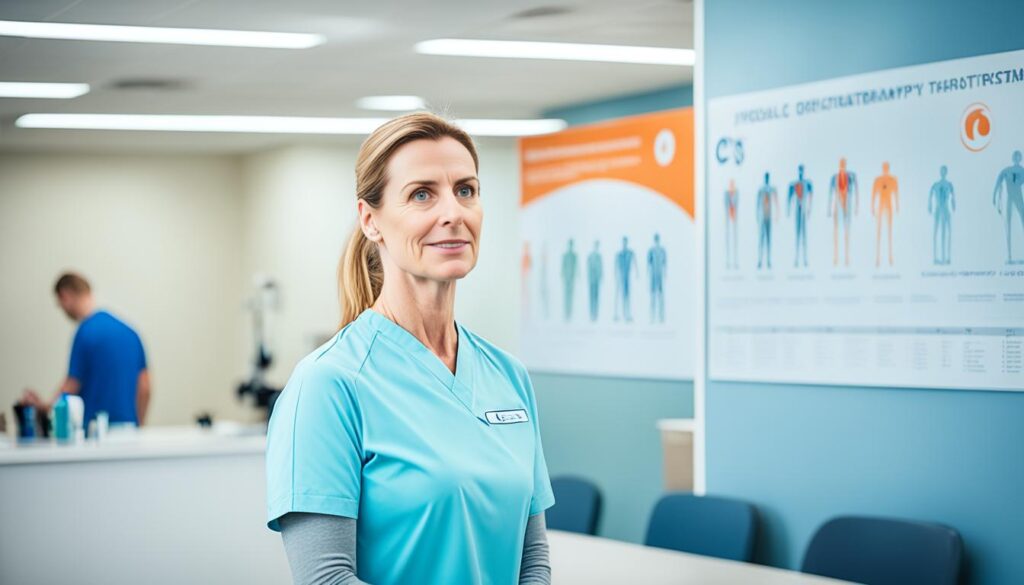
| Factors to Consider when Choosing a Physical Therapist for CRPS Treatment |
|---|
| Expertise in treating CRPS |
| Experience working with individuals with CRPS |
| Multidisciplinary approach involving collaboration with doctors and psychologists |
| Commitment to personalized care |
| Effective communication and collaboration skills |
Successful Case Studies of Physical Therapy for CRPS
Multiple case studies have provided compelling evidence of the positive outcomes achieved through physical therapy in managing Complex Regional Pain Syndrome (CRPS). These studies highlight the significant reduction in pain levels, improved functional abilities, and enhanced overall quality of life experienced by individuals receiving physical therapy interventions for CRPS.
The Power of Manual Therapy
One striking case study involved a patient named Sarah, who had been living with CRPS for several years. After undergoing a series of manual therapy sessions with a skilled physical therapist, Sarah experienced a significant decrease in pain intensity, enabling her to engage in daily activities with greater ease. The targeted manual therapy techniques used by the therapist improved Sarah’s mobility and reduced the hypersensitivity associated with CRPS.
Exercise as a Catalyst for Healing
In another fascinating case study, a patient named David, who had been severely restricted by CRPS-related pain and stiffness, was introduced to a customized exercise program. Under the guidance of his physical therapist, David gradually incorporated specific exercises to improve joint mobility and muscle strength. Over time, David experienced remarkable improvements in his ability to perform various movements, and the intensity of his pain decreased substantially, leading to a significant increase in his overall function and quality of life.
Sensory Retraining for Lasting Benefits
One compelling case study focused on implementing sensory retraining techniques in CRPS treatment. A patient named Lisa, who had been struggling with debilitating pain and extreme sensitivity to touch, underwent a series of sensory retraining exercises guided by her physical therapist. Through repetitive exposure to gentle touch and gradual desensitization, Lisa’s hypersensitivity decreased significantly, allowing her to engage in previously unbearable activities. The positive results of this case study demonstrate the effectiveness of sensory retraining in reducing pain and improving function in individuals with CRPS.
These case studies serve as powerful reminders of the transformative potential of physical therapy interventions for individuals living with Complex Regional Pain Syndrome. By embracing a multidimensional approach that incorporates manual therapy, targeted exercises, and sensory retraining, physical therapists can play a crucial role in reducing pain, enhancing function, and ultimately improving the quality of life for individuals with CRPS.
Importance of Compliance and Commitment to Physical Therapy for CRPS
Achieving successful outcomes in CRPS treatment requires compliance and commitment to the physical therapy plan. Consistent attendance, active participation in exercises and interventions, and following the therapist’s guidance are essential for long-term benefits. Physical therapy is a progressive and ongoing process, and individuals with CRPS need to stay committed to their treatment plan to achieve optimal results.
Compliance with physical therapy is crucial for effectively managing CRPS symptoms and improving overall function. By consistently attending therapy sessions and actively engaging in prescribed exercises and interventions, individuals can maximize the therapeutic benefits of physical therapy.
Consistency and Active Participation
Consistency is vital in physical therapy for CRPS. Regular attendance allows therapists to monitor progress and adjust treatment plans accordingly. Individuals can contribute to their healing process and improve their outcomes by actively participating in therapy sessions.
During physical therapy, individuals with CRPS can expect a variety of interventions to address pain, mobility limitations, and other symptoms. These may include:
- Manual therapy techniques to mobilize joints, reduce pain, and improve circulation
- Targeted exercises to enhance strength, flexibility, and stability
- Sensory retraining to desensitize affected areas and minimize hypersensitivity
- Education and guidance on self-care techniques and pain management strategies
Active participation in these interventions is essential for achieving long-term benefits. Individuals can facilitate their recovery and regain function by following the therapist’s guidance and engaging wholeheartedly in the prescribed exercises and techniques.
Long-Term Benefits of Commitment
Commitment to physical therapy is vital in achieving long-term benefits for individuals with CRPS. It is essential to recognize that physical therapy is not a one-time solution but a continuous journey towards healing and improved well-being.
Consistently engaging in physical therapy sessions and adhering to the recommended home exercise programs can yield significant long-term benefits, including:
- Reduced pain intensity and frequency
- Improved joint mobility and flexibility
- Enhanced muscle strength and endurance
- Increased independence in daily activities
- Enhanced quality of life
By committing to physical therapy and actively participating in the prescribed treatment plan, individuals with CRPS can experience these positive outcomes and enjoy a better quality of life.
Staying Motivated and Overcoming Challenges
Staying motivated throughout the physical therapy journey can be challenging, especially when faced with setbacks or slow progress. However, it is essential to remember that healing takes time and consistency and commitment are crucial to achieving long-term benefits.
Engaging with a supportive healthcare team, including physical therapists, can provide encouragement and guidance along the way. Setting realistic goals, celebrating small victories, and seeking support from friends and family can also help individuals stay motivated on their path to recovery.
| Benefits of Compliance and Commitment to Physical Therapy for CRPS |
|---|
| 1. Improved pain management |
| 2. Enhanced mobility and function |
| 3. Reduced hypersensitivity to touch |
| 4. Increased independence in daily activities |
| 5. Better overall quality of life |
By embracing a committed and consistent approach to physical therapy, individuals can optimize their chances of overcoming CRPS symptoms and achieving long-lasting benefits. Active participation, dedication, and a positive mindset can make a significant difference in the progress and outcomes of CRPS treatment.
The Future of Physical Therapy in CRPS Treatment
Physical therapy is constantly evolving, driven by research, innovation, and a desire to improve the lives of individuals with Complex Regional Pain Syndrome (CRPS). As advancements continue, promising developments are emerging that hold great potential for the future of CRPS treatment.
Advancements in Personalized Interventions
One significant area of progress is the refinement of personalized interventions. Physical therapists are increasingly tailoring treatment plans to address individuals’ unique needs and goals with CRPS. Personalized interventions can provide more targeted and effective care by considering the severity of symptoms, the specific affected areas, and the patient’s overall health.
Integration of Cutting-Edge Technologies
Another exciting aspect of the future of CRPS treatment is the integration of cutting-edge technologies. Innovations such as virtual reality therapy, transcutaneous electrical nerve stimulation (TENS), and robotic-assisted rehabilitation have shown promise in managing pain, improving mobility, and enhancing functional outcomes for individuals with CRPS.
Evidence-Based Strategies for Symptom Management
The ongoing research in CRPS treatment is leading to the development of evidence-based strategies for symptom management. With a better understanding of the underlying mechanisms and triggers of CRPS, physical therapists can implement targeted interventions that address pain, inflammation, hypersensitivity, and other symptoms associated with the condition.
The Crucial Role of Physical Therapy
As research and innovation continue to advance, physical therapy will play a critical role in the comprehensive management of CRPS. The expertise of physical therapists in movement analysis, pain management, and functional rehabilitation uniquely positions them to provide holistic care for individuals with CRPS.
Physical therapy not only aims to alleviate pain and improve function but also focuses on enhancing the overall quality of life for individuals with CRPS. By offering personalized care, education, and guidance, physical therapists empower patients to participate actively in their treatment, leading to better long-term outcomes.
In summary, the future of CRPS treatment holds promise with advancements in personalized interventions, the integration of cutting-edge technologies, and evidence-based strategies for symptom management. As research and innovation propel the field of physical therapy forward, individuals with CRPS can look forward to improved outcomes, enhanced mobility, and a better quality of life.
Conclusion
In summary, physical therapy is crucial in comprehensively treating Complex Regional Pain Syndrome (CRPS). By focusing on symptom management, improving mobility, and providing personalized care, physical therapy offers significant benefits for individuals living with CRPS. Individuals with CRPS can effectively manage chronic pain and enhance their quality of life through a multidisciplinary approach that collaborates with other healthcare professionals.
Physical therapy interventions, such as manual therapy, exercise, and education, are tailored to each individual’s specific needs and goals with CRPS. By addressing underlying factors and utilizing targeted techniques, physical therapists help manage pain, improve function, and enhance overall well-being. The importance of personalized care cannot be overstated, as it allows for a holistic approach that considers each individual’s unique challenges and needs.
A commitment to long-term treatment and collaboration with healthcare professionals is essential to achieve optimal results. Physical therapy is a progressive and ongoing process, and consistency in attending sessions, actively participating in exercises and interventions, and following the therapist’s guidance is crucial. By staying engaged and committed, individuals with CRPS can experience significant improvements in chronic pain management, mobility, and overall quality of life.
FAQ
What is Complex Regional Pain Syndrome?
Complex Regional Pain Syndrome (CRPS) is a painful and disabling condition that affects the central and peripheral nervous systems. It is a multisystem disorder characterized by severe and long-lasting pain. CRPS can arise from an injury to an arm or leg and affects multiple systems in the body, resulting in extreme sensitivity to touch, changes in bones and skin, excessive sweating, and tissue swelling.
How is Complex Regional Pain Syndrome Diagnosed?
CRPS is typically diagnosed by a doctor familiar with the syndrome. They will conduct a thorough medical evaluation, ruling out other conditions that may cause similar symptoms. The diagnosis is based on a combination of the individual’s reported symptoms, physical examination findings, and medical history. If CRPS is suspected, the individual may be referred to a physical therapist as part of their treatment plan.
What is the role of physical therapy in CRPS treatment?
Physical therapists play a crucial role in the treatment of CRPS. They develop personalized treatment plans to address individuals’ specific needs and goals with CRPS. Physical therapy aims to manage symptoms, improve function, and enhance the quality of life for those living with CRPS. Physical therapists use various techniques, including manual therapy, exercise, and education, to help individuals with CRPS regain mobility and reduce pain.
What are the benefits of physical therapy for CRPS?
Physical therapy offers several benefits for individuals with CRPS. It helps manage chronic pain by addressing underlying factors, improving mobility, and reducing hypersensitivity to touch. Physical therapists provide education and guidance on self-care techniques and strategies for pain management. Through targeted exercises and interventions, physical therapy helps individuals regain function and improve their overall quality of life.
How can CRPS be prevented?
While CRPS cannot always be prevented, early intervention and appropriate treatment can help reduce the risk of developing the condition. It is essential to properly manage injuries, fractures, and surgeries to minimize the chances of CRPS. Avoiding prolonged immobilization and receiving appropriate physical therapy after an injury can significantly reduce the likelihood of developing CRPS.
How can I find the right physical therapist for CRPS treatment?
When seeking physical therapy for CRPS, it is essential to find a physical therapist with expertise in treating the condition. Look for a therapist who has experience working with individuals with CRPS and understands the intricacies of the condition. A multidisciplinary approach involving collaboration with doctors and psychologists can provide comprehensive care. Effective communication and a solid patient-therapist relationship are essential for personalized care and successful CRPS treatment.
Are there successful case studies of physical therapy for CRPS?
Numerous case studies have demonstrated the positive outcomes of physical therapy in managing CRPS. Physical therapy interventions, such as manual therapy, exercise, and sensory retraining, have been shown to reduce pain, improve function, and enhance the overall quality of life for individuals with CRPS. These case studies provide evidence of physical therapy’s effectiveness and importance in treating CRPS.
What is the importance of compliance and commitment to physical therapy for CRPS?
Achieving successful outcomes in CRPS treatment requires compliance and commitment to the physical therapy plan. Consistent attendance, active participation in exercises and interventions, and following the therapist’s guidance are essential for long-term benefits. Physical therapy is a progressive and ongoing process, and individuals with CRPS need to stay committed to their treatment plan to achieve optimal results.
What does the future hold for physical therapy in CRPS treatment?
Physical therapy continues to advance, and research and innovation in CRPS treatment are ongoing. Future developments may include:
- Further refinement of personalized interventions.
- The use of cutting-edge technologies.
- Additional evidence-based strategies for symptom management.
Physical therapy will continue to play a critical role in improving the lives of individuals with CRPS and addressing their unique needs.
Source Links
About The Author

This article is medically reviewed by Dr. Chandril Chugh, Board-Certified Neurologist, providing expert insights and reliable health information.
Dr. Chandril Chugh is a U.S.-trained neurologist with over a decade of experience. Known for his compassionate care, he specializes in treating neurological conditions such as migraines, epilepsy, and Parkinson’s disease. Dr. Chugh is highly regarded for his patient-centered approach and dedication to providing personalized care.
→ Book a consultation to discover which remedies suit your needs best.

